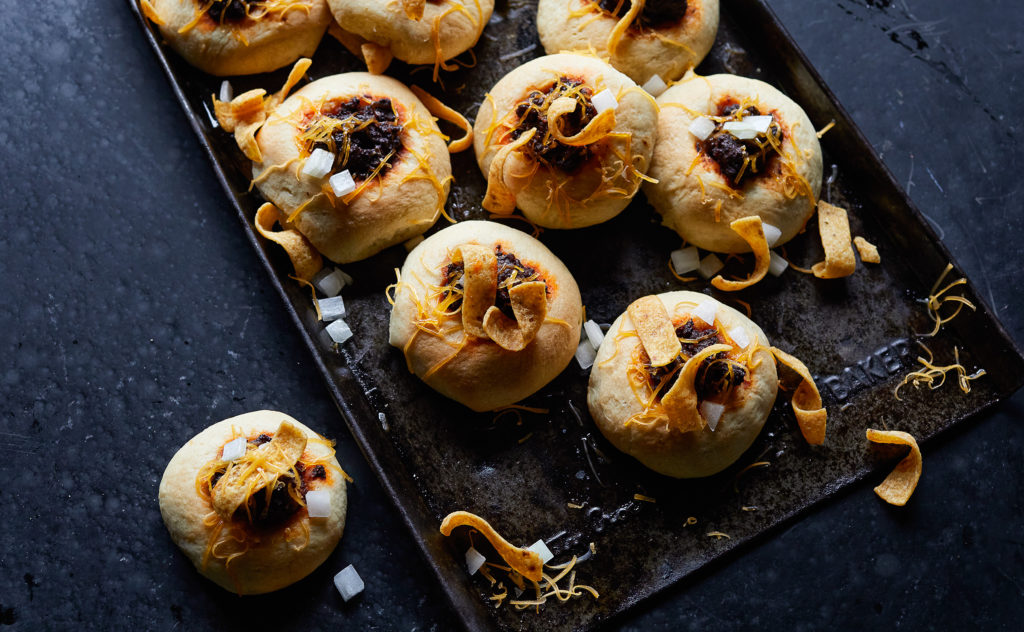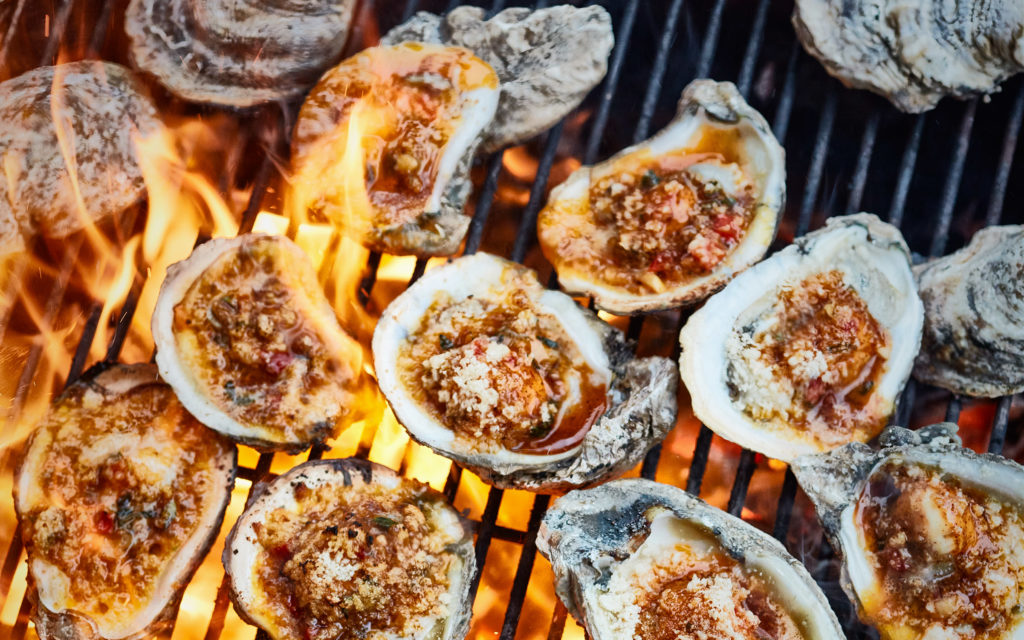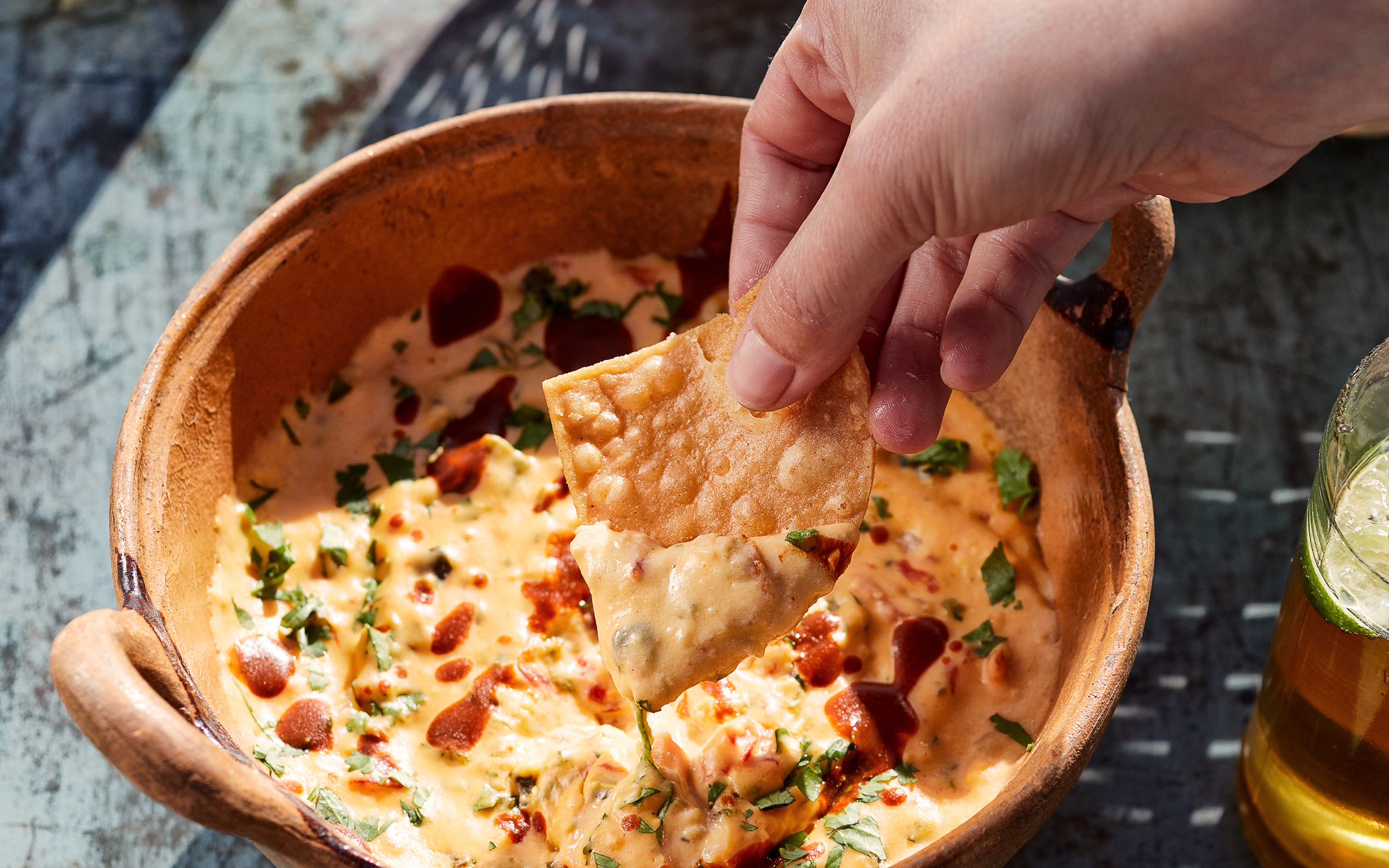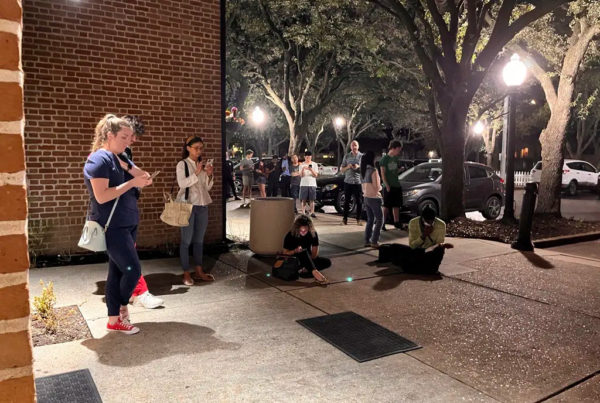The way we eat, and how that’s changed over the years, has been a big part of Texas Monthly’s coverage of the Lone Star State over the past 50 years. The magazine’s latest project to document the wide range of Texas food is “The Big Texas Cookbook: The Food That Defines the Lone Star State,” a collection of 100 recipes new and old, along with essays from past and present contributors to the magazine.
Texas Monthly food editor Courtney Bond and longtime dining critic Pat Sharpe told Texas Standard that the cookbook honors Texas food traditions, along with newer dishes created by those who have migrated here. Listen to the interview above or read the transcript below.
This transcript has been edited lightly for clarity:
Texas Standard: “The Big Texas Cookbook” includes 100 recipes. I would think it’s pretty difficult to boil it all down to just one to represent all the cuisines and traditions you’ve got to cover here in Texas. Did you set any guidelines for yourselves that helped you pick out which cuisines or categories had to be included?
Courtney Bond: I will say it was very hard, and I feel that we barely scratched the surface, as you can imagine. We knew we had to do the classics: chicken-fried steak, King Ranch casserole, chili and so on. We have entire chapters devoted to barbecue and Tex-Mex, of course, but we also wanted to include more modern takes on what we consider our foundational dishes. We have a Lao Texas chili, and we have a Haitian soup, joumou from Jonny Rhodes in Houston. We just wanted to give people what they want, which of course, are those classic dishes, but also introduce them to some new things that they might not have tried before.
When you talk about Texas cuisine, a lot of it includes the state’s climate – what grows and thrives here, right? Can you talk about a couple of dishes that you see as especially Texan? And what does that mean to be a Texas dish?
Pat Sharpe: Well, I think the first one that I want to mention is the pecan, because, of course, that is our state nut. And we’ve got pecan pie. We’ve got pecan pralines. We’ve got Texas sheet cake with pecans on top. So I think that we’ve we covered that one pretty well. And because pecans grow very widely across the state, I think a lot of people will find those recipes attractive.
And then another one that springs to mind are doves, because dove season is a big deal right about this time of year, with lots of hunters in Texas. And we’ve got a great recipe for those jalapeño dove poppers that hunters like to make.
I’m so proud of myself that I resisted the temptation to make a dad joke about the state nut.
CB: That gives me the opportunity to recite one of my favorite lines from the cookbook, which is from our writer, Emily McCullar, who says that that’s the only nut Texas grows commercially, other than our politicians.

Frito kolaches from “The Big Texas Cookbook.”
Jody Horton / Texas Monthly
Let’s get on to chili. I was at a cookout once among friends, and quite the controversy erupted when one of them talked about beans in chili. And I know every native Texan, it seems, has an opinion about this, generally that beans in chili is a big no-no. But this particular friend said, chili with beans is a hot dog condiment. This did incite quite the debate over the campfire. So I’m curious, do either of you have any take on why it is that chili is such a lightning rod?
PS: I looked back, because I was curious about this to see if I could figure out where it all started. And somewhere online, I came across a comment that made a lot of sense to me, and it was from somebody who has entered a lot of chili contests. And he said the rule in the chili contest is they don’t want anything that’s going to distract from the skill that the participant shows in cooking the meat. So in other words, they don’t want any beans to distract you. They don’t want any tomatoes watering it down or changing the flavor. And I think that maybe that’s one reason it’s become such a flashpoint and people are so adamant about it. Courtney, do you have any ideas?
CB: I think that at the chili competitions, they consider beans filler. They consider it a distraction, that they want the complexity of the beef and the spices and the dried chiles to stand alone. But at the same time, we have a wonderful essay in the book from David Courtney, who writes as the Texanist, who decided one day he was going to make chili with beans and he lived to tell the story.
Any surprises in this book, especially for readers who expect recipes for chicken-fried steak, enchiladas, peach cobbler – all that sort of thing – but might not realize how much variety there is in Texas cooking?
PS: Oh, there are so many recipes that are a surprise, but they also they dovetail very often with things that are traditionally Texan. One that really caught my attention was the Korean smoked beef ribs. And it’s a long recipe, so I won’t try to tell you all about it. But what stands out is there’s a marinade for the beef ribs that involves orange juice and red wine and sesame oil. And it makes a big difference. And it’s like a recognizable, sort of meaty, hearty Texas recipe, but with a Korean twist.
I think most people immediately think barbecue and Tex-Mex when they think of Texas in cooking. Courtney, could you say more about some important styles and recipes that newer Texans have brought to the state? Korean food is obviously one of them.
CB: That’s just what’s so interesting to me is, every culture brings its traditions, and those are as varied as the people who come here. But it’s that intersection where those cultures meet with traditional Texas techniques and foods like, let’s put brisket in ramen. Valentina’s in Austin does brisket empanadas. What can we put in a tortilla?
You know, José Ralat, our taco editor, just wrote in our November issue about a place in Bedford, which is near Fort Worth, called the Dream Tacos, where you can get a tandoori chicken taco, and sushi nachos and so on. And the beef rib that Pat was talking about, they are in our cookbook. There’s a recipe for a beef rib nigiri where they take it and form it over rice and it’s just so, so exciting. The Lao chili that that we have in there, they take the garlic and they take the cumin, but then they add fish sauce and lemongrass. And it’s just so interesting what people bring to the dishes that we have long treasured and make them sometimes even better.
I’ve got to ask you about the beef nigiri. Is that beef cooked or raw?
CB: Oh, it’s cooked. Yeah.
PS: Don’t we also have sort of a steak tartare like – parisa?
CB: Yes, I think we do.

Oysters from “The Big Texas Cookbook.”
Jody Horton / Texas Monthly
This book contains a number of essays along with the recipes, which I think speaks to how a lot of what we love about food is tied up in tradition and storytelling. That’s a big part of cuisine in Texas, right?
CB: Absolutely. We have an older essay that we included by Prudence Mackintosh where she writes about Helen Corbitt. And of course, I have always known of Helen Corbitt’s Neiman Marcus affiliation – her invention of Texas caviar. But I didn’t realize how very thoroughly she brought Texas dining into the modern age.
And then we have an essay from Daniel Vaughn, our barbecue editor, where he defends barbecue sauce, which is a lot of fun. And then there’s a wonderful essay by Jose Galvan where he attempts to recreate his Harlingen family’s fideo, but he lives in Oregon. And so he tells a wonderful story of trying to find the ingredients that he feels are necessary. And it’s just about home, and missing home. And it’s an evocative piece on just how to recreate those dishes that mean so much to us.
The cool thing about cookbooks is that many of them are handed down from generation to generation. We’ve got a cookbook from the 50s that belonged to my grandmother; I’m sure a lot of kitchens have one of those. And I’m curious – what are you hoping to do with this Texas cookbook? Is this more a contemporary read about Texas and its food, or are you thinking maybe this is one of those legacy books?
PB: We’ve got to say both. There really is a bedrock of recipes that are so traditional that you do expect when you say the words “Texas cookbook.” But there’s so many surprises and there’s such great reading. I mean, I sat down with this after they brought the first copies to the office and just read the essays, and there’s so much fun. I think that that’s going to be a big attraction, and I think that’s going to be part of the legacy of the book.
















